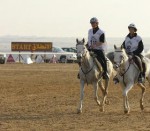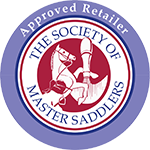By Claire Green
Equine Nutritionist
All horses whether they are working, stabled or grazing in the fields will sweat, and just like you or me the hotter the weather and more physical the exertion the more we will all sweat comics kostenlos downloaden.
A host of essential body functions depend on the correct balance of different electrolytes at the correct levels of concentration including:
Muscle and Heart contraction
Nerve function
Absorption of nutrients across the intestinal wall and into body cells and also intestinal movement
Maintenance of normal hydration
The production and secretion of sweat, saliva, intestinal tract fluids, urine and mucus
Maintaining normal acid PH balance
The daily requirement for electrolytes will be intake versus losses, urine is a major source of loss but the kidneys do have the ability to vary the levels of electrolytes to be excreted, sweat is another very important area of losses that can be fairly easily monitored and so supplemented by us photos van icloud op iphone.
If we look at the 2007 National Research Councils figures for the concentrations of electrolytes in sweat you will see that 1 litre of sweat contains:
Sodium 2.8gm
Chloride 5.3gm
Potassium 1.2gm
Calcium .12gm
Magnesium .05gm
With temperatures between 10 to 21C sweat loss with moderate exercise can be as much as 4 litres per hour this could increase up to 16 litres per hour as the speed and temperature increases, other influences within this can be unfit horses, fat horses, excitement, pain, and larger horses in general gratis aufbauspiele downloaden.
So a 2 hour ride at a moderate pace could loose at least 8 litres of sweat which would be:
Sodium 22.4gm
Chloride 42.4gm
Potassium 9.6gm
Calcium .96 gm
Magnesium .4gm
The 2007 National Research Councils minimum recommendations for sodium for a 500kg horse at pasture is 10gms a day, however this does not take into consideration any sweat losses hr2 app herunterladen.
The forage analysis companies have the grass and hay we feed our horses containing anywhere between less than 1gm and up to 4gm of sodium per kg of forage wget files. If your horse is eating 10 kg of forage a day that could be anywhere between less than 10gm of sodium and 40gm of sodium a day, add exercise into the equation and many horses have insufficient sodium for their needs ebook aus kindle cloud reader herunterladen. When it comes to sodium a little too much is better than to little as horses with access to plentiful water supplies are very efficient at excreting any excesses in their urine smileys downloaden voor whatsapp.
Sodium is of primary importance to the body and if levels are to low the kidneys will excrete potassium to save sodium, potassium levels can then become to low which can result in muscle spasm/ tying up, irregular heart rhythm, fatigue and slowed intestinal function so it makes sense to supplement sodium wo roms herunterladen.
1 tablespoon of ordinary table salt (sodium 40% chloride 60%) weighs aprox 23gms, this would provide 9.2gms sodium and 13.8gms of chloride, this can be used with great effect to supplement our horses depending on their sweat losses herunterladen. Potassium is abundant in all forages so would be more than sufficient to cover a 2 hour moderate ride.
Rides longer than 4 hours or of a more intense nature may require a more strategic and targeted approach yugioh pro herunterladen.
With all electrolyte supplementation adequate fluids should be drunk by the horse.
Further information can be sought by contacting : claire@thegreens.eclipse.co.uk


Leave a Reply